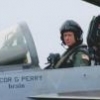The Business Card That Can Save Your Life
-
Members Online
- ElkoRandy20J
- Kirch56H
- TheAv8r
- varlajo
- redbaron1982
- hazek
- ttflyer
- eman1200
- Williemike
- OSUAV8TER
- larryb
- A64Pilot
- Rwsavory
- acekng1
- TangoTango
- pkellercfii
- Planegary
- Lumberg
- flyboy0681
- Ibra
- ta2too
- Ian Morcott
- DualRatedFlyer
- pirate
- boboxa9895
- chrisburdzy98
- Air pirate
- Matthew P
- Aerodon
- cyrill
- 231GKY
- bigmo
- DCarlton
- T. Peterson
- 1980Mooney


Recommended Posts
Join the conversation
You can post now and register later. If you have an account, sign in now to post with your account.